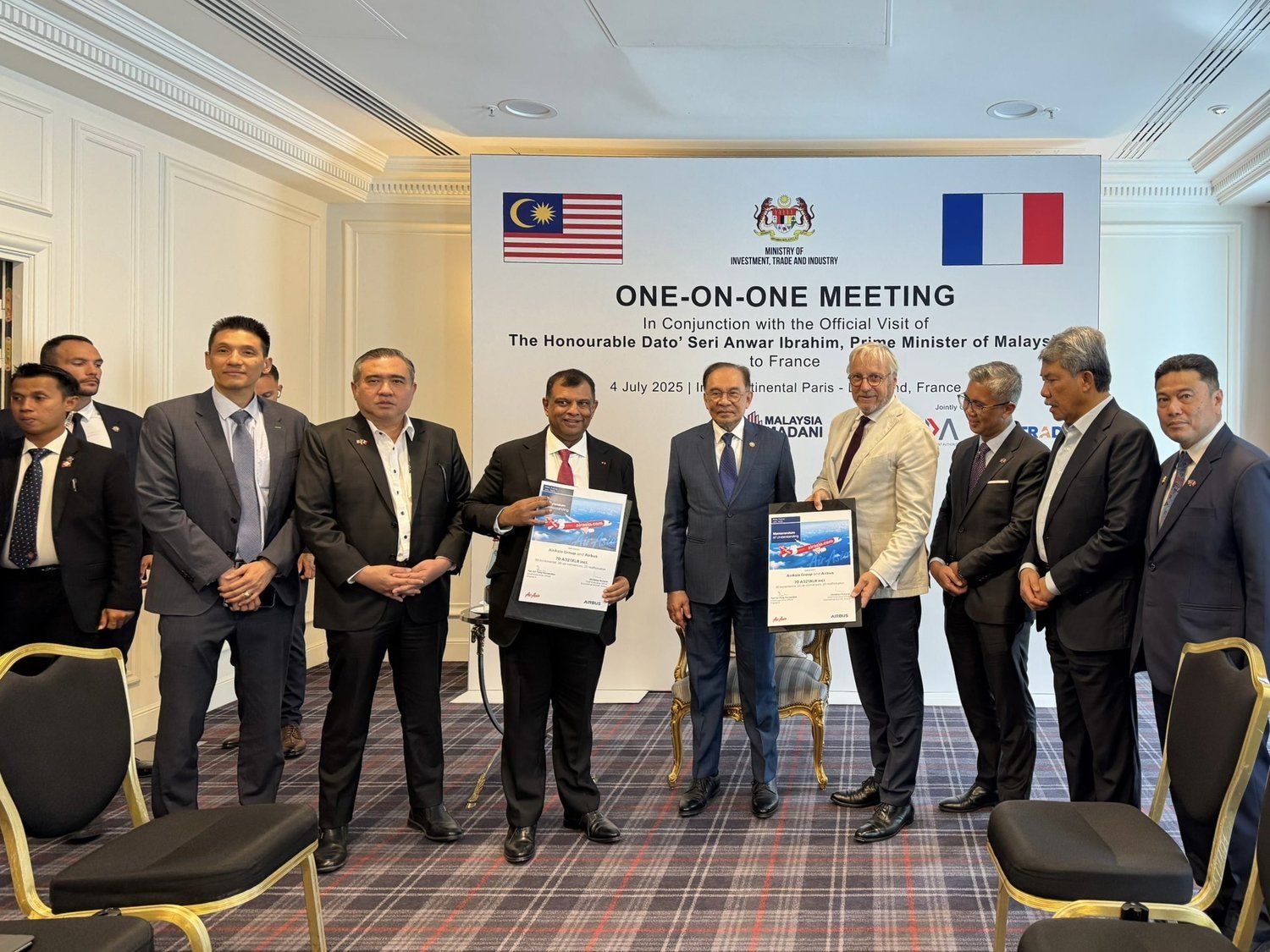AirAsia orders up to 70 A321XLRs to launch global network model
AirAsia Berhad, a subsidiary of Capital A Berhad, has signed a Memorandum of Understanding in Paris with Airbus for 50 A321XLR aircraft, with options for 20 more, in an agreement valued at USD 12.25 billion.
The signing, attended by Malaysian Prime Minister Anwar Ibrahim, marks a strategic shift as the airline positions itself to become the world’s first low-cost carrier operating as a network airline, supported by a multi-hub structure. This approach differs from the typical point-to-point model used by low-cost carriers, instead relying on connected flights and centralized hubs.
Tony Fernandes, CEO of Capital A and a key figure at AirAsia, said the airline is “taking the next step after pioneering low-cost travel in Asia,” and described the shift as one of “exponential growth, connecting geographies beyond Southeast Asia and making flying even more accessible.” He added that the aim is to “let the world see Asean, and Asean see the world.”
Deliveries of the aircraft are scheduled between 2028 and 2032, enabling the airline to open up long-haul routes currently underserved, including destinations in Central Asia, the Middle East, and Europe. According to the company, the A321XLR model offers up to 20% lower fuel burn per seat compared to the A321neo, improving environmental performance and operational efficiency.
“AirAsia is creating solid fleet efficiencies that allow for the expansion of a global network,” said Christian Scherer, CEO of Airbus Commercial Aircraft. He noted that the A321XLR “unlocks new opportunities to launch non-stop flights linking primary and secondary cities around the world.”
The aircraft will join an all-Airbus fleet currently composed of A320 and A330 models. AirAsia highlights that this multi-aircraft strategy enables better capacity management, lower fuel consumption, and a more sustainable, cost-efficient operation in a competitive global market.
According to the airline, its goal is to carry 150 million passengers annually by 2030, reaching a cumulative total of 1.5 billion passengers since its founding.


Para comentar, debés estar registradoPor favor, iniciá sesión